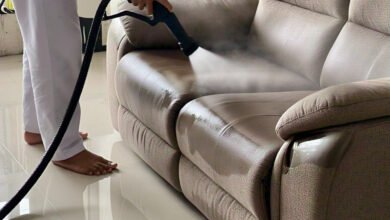Who is Responsible for the Water Line from the Street to Your House?

If you suddenly notice a soggy patch on your lawn or water pressure dropping at home, one of your first questions might be: Is this my problem or the city’s?
Understanding who takes care of the water line from street to house can feel confusing but once you break it down, it’s actually pretty straightforward. Let’s walk through it together in simple terms.
How Water Gets to Your Home
Before we jump into who is responsible for the water meter leaking, it helps to know how your water even gets to you.
Water starts its journey in big underground pipes that run along your street; these are managed by your local water authority.
From there, it travels through a smaller pipe that connects to your home.
Somewhere near the edge of your property, there’s usually a water meter, which acts like a line in the sand: what’s before it is the city’s job, and what’s after it is inside your property, so, it is your responsibility.

A Quick Overview of the Layout
You can think of the whole setup in four simple parts:
Even though your home’s water line is buried underground, it’s not immune to problems. The part that falls under your responsibility is from the water meter to your house, which can face all sorts of issues, so always be aware.
What Can Go Wrong with Your Water Line?
- Corrosion
Old pipes can corrode over time, especially if your home was built decades ago and still uses metal piping. Rust builds up slowly and quietly, weakening the pipe until it finally gives way.
- Root Infiltration
Tree roots are another sneaky culprit. They’re always searching for moisture, and if there’s even the tiniest crack in your pipe, those roots can force their way in, clogging or breaking the line completely.
- Shifting Soil
Soil doesn’t stay still forever. Whether it’s from heavy rains, dry weather, or nearby construction, shifts in the ground can stress and eventually crack your underground pipes even if they were fine for years.
- Construction Damage
And of course, there’s accidental damage. Homeowners often start digging for a garden bed or fence post without knowing what’s underneath. One wrong move with a shovel or power tool and you could puncture your own water line without meaning to.
These issues usually stay hidden until the signs start showing up in your yard or on your water bill. Unfortunately, if the problem lies on your side of the meter, you’re the one who has to handle both the problem and the cost.
This visual can help you quickly identify the major culprits behind underground pipe issues.
When to Call a Professional
If the issue lies after the meter, it’s your job to hire a licensed plumber. However, for anything before the meter (on the city’s side), you should first contact your local water authority. It’s important to coordinate access and properly assess the issue before starting any work.
In simple words, when it comes to water line responsibility, here’s the easy rule:
- If the issue is before the meter (closer to the street), it’s mostly the city’s job.
- If the issue is after the meter, it’s yours.
This includes leaks, blockages, or damage caused by trees, time, or even just wear and tear. Most councils follow this rule, but it’s always worth double-checking with your local water authority if you’re still worrying.
Maintaining Your Property’s Pipes
Now, no one expects you to become a plumbing expert overnight, but a little awareness goes a long way. Taking care of your pipes is part of property water line maintenance, and it can prevent big problems down the track.
Here are some easy tips:
- Know where your water meter is. It’s usually near the footpath.
- Keep big trees away from pipe areas. Roots can cause serious damage.
- Be careful when digging. If you’re planting or renovating, find out where your pipes run first.
- Watch for warning signs. Low water pressure, wet patches, or high water bills could be signs of a leak.
Financial Considerations
The water line repair cost can vary depending on the degree of damage, location, depth of the pipe, and type of material. Minor fixes might cost a few hundred dollars, but complete replacements of the underground line could reach several thousand.
It’s best for homeowners to:
- Keep emergency local plumbers contacts ready
- Perform yearly checks
- Know where their pipes are located before any digging
These small steps help avoid bigger issues and bills later.
Clarifying Responsibilities Without Confusion
It’s important to remember that homeowner vs. city water line responsibility generally breaks at the meter in most Australian residential areas. Still, some local councils or rural properties may have different rules. Always check with your local utility for confirmation.
Conclusion: Staying Ahead with Awareness
Understanding street-to-house water line ownership helps homeowners react faster during emergencies, avoid unnecessary costs, and maintain better control over water usage. With proper maintenance, clear communication, knowledge of boundaries, and proper drain cleaning services you can keep your home’s plumbing running smoothly.



